July 16th, 2021
posted
by Andrew Blomme on 7/16/2021
in
Weekly Newsletter

July 16th, 2021
Staging Soybeans for Fungicide
Soybean fungicide provides the best return when applied at the R3 stage. Soybean staging can be confusing so we will take a look at how to determine when your soybean crop is at R3.
The R3 stage is dubbed the "Beginning Pod" stage. By definition, it begins when there is a pod at least 3/16" long in the uppermost 4 nodes of the plant. A node is the connection point between the main stem and the petiole (the branch leading to a leaf). Flowers, and later pods, form at nodes. The picture below is a close up of a soybean node with all it's parts labeled.
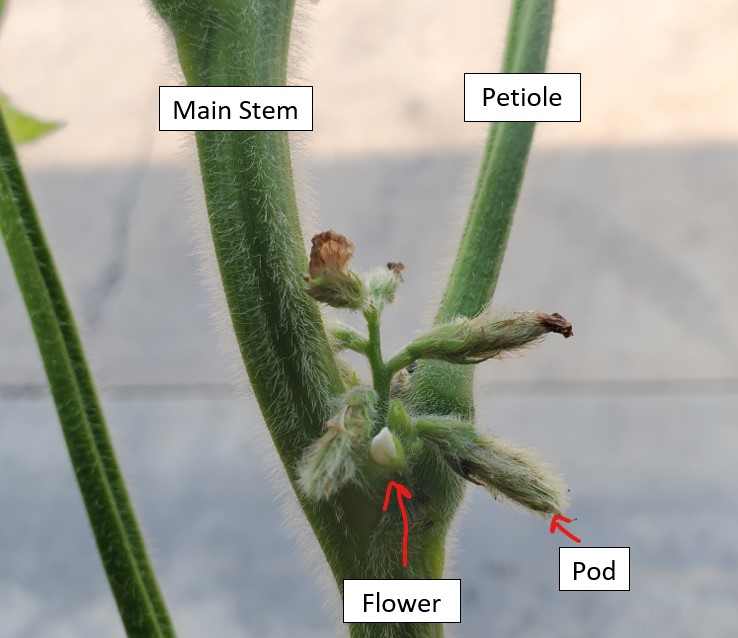
The picture below shows a soybean plant with the 4 uppermost nodes circled. This is the area to focus on when determining if a plant is at R3.
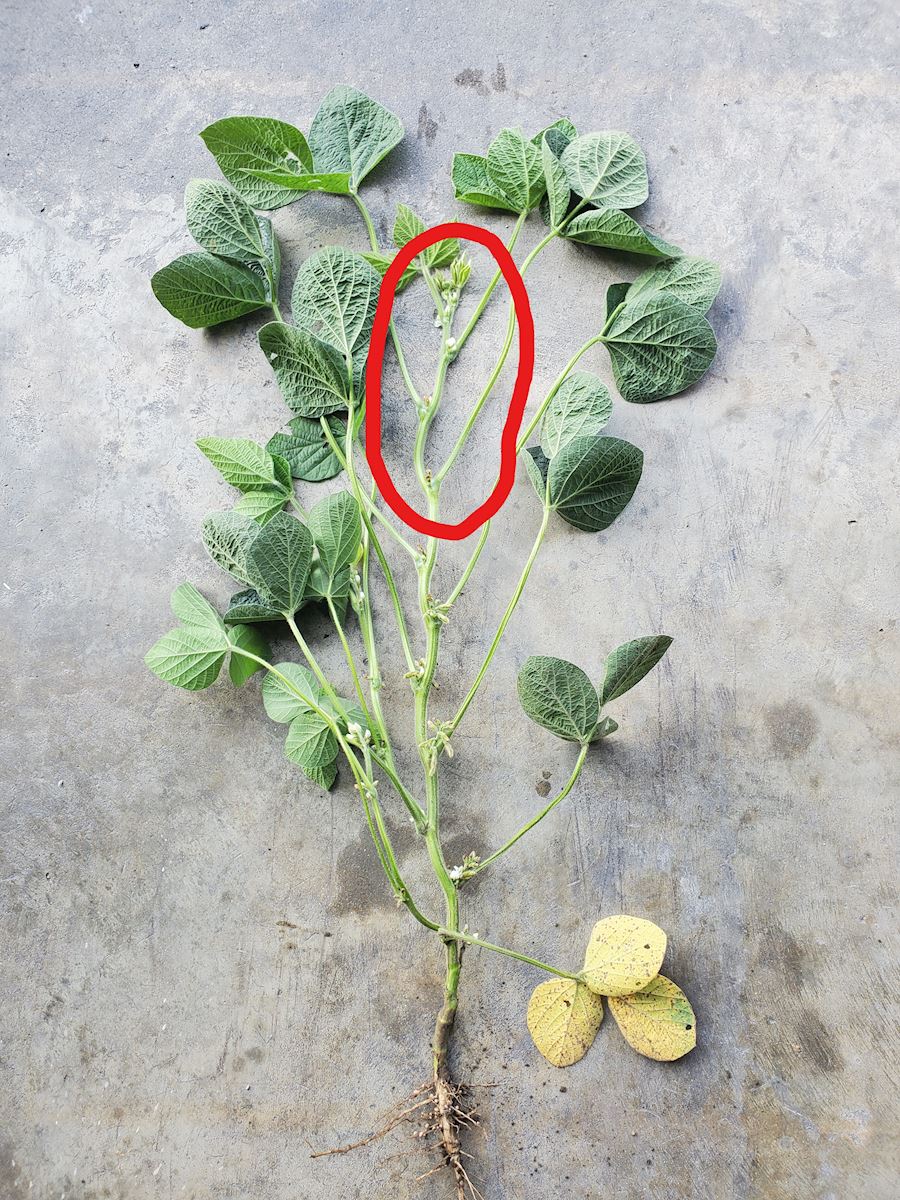
A soybean plant is at R3 when one of those nodes circled above has a pod that is at least 3/16" long. The picture below shows a pod the is 3/16" long.
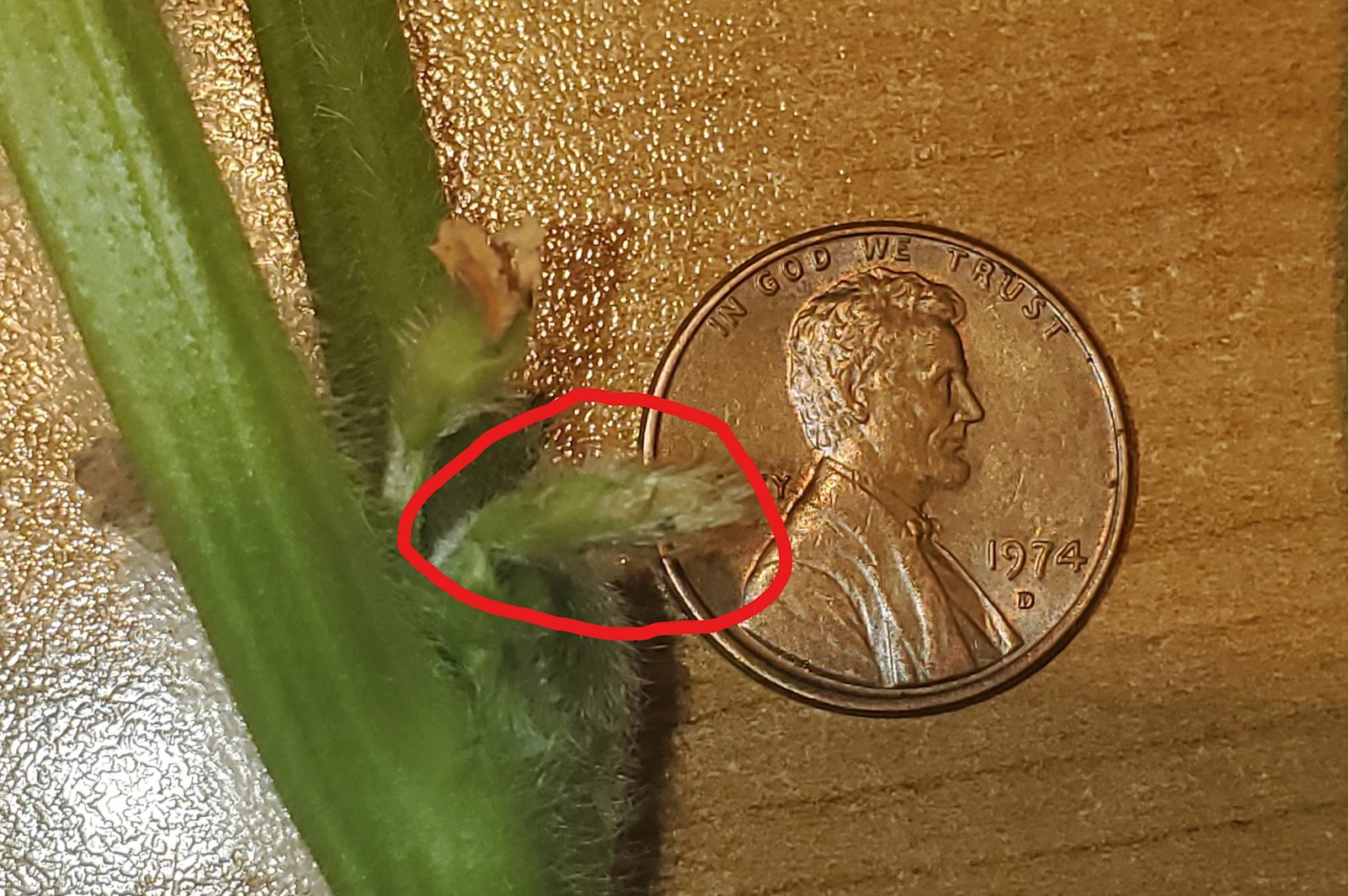
To recap, a soybean plant is at R3 when a 3/16" pod can be found within the 4 uppermost nodes of a soybean plant. There will be much bigger pods located towards the bottom of the plant but you should only focus on the top 4 nodes to determine staging. Once a field reaches R3 it has the green light to get sprayed with fungicide.
From my observations this week, early planted 2.0 maturity soybeans are right on the cusp of R3. 2.3-2.6 maturity beans will likely be at R3 mid to late next week, and the 2.7-3.0 maturity beans still need 6-7 days before reaching R3.
Corn Rootworm Pressure
The corn rootworm pressure in our area has been abnormally high this year. A mild winter followed by a drier spring led to a large number of rootworm eggs surviving to cause damage to this year's corn crop. Root pruning due to rootworm larva feeding is more common than typical this year, primarily in corn on corn fields. In extreme cases, larva pruned upwards of 75% of the nodal roots of a corn plant, as shown below. 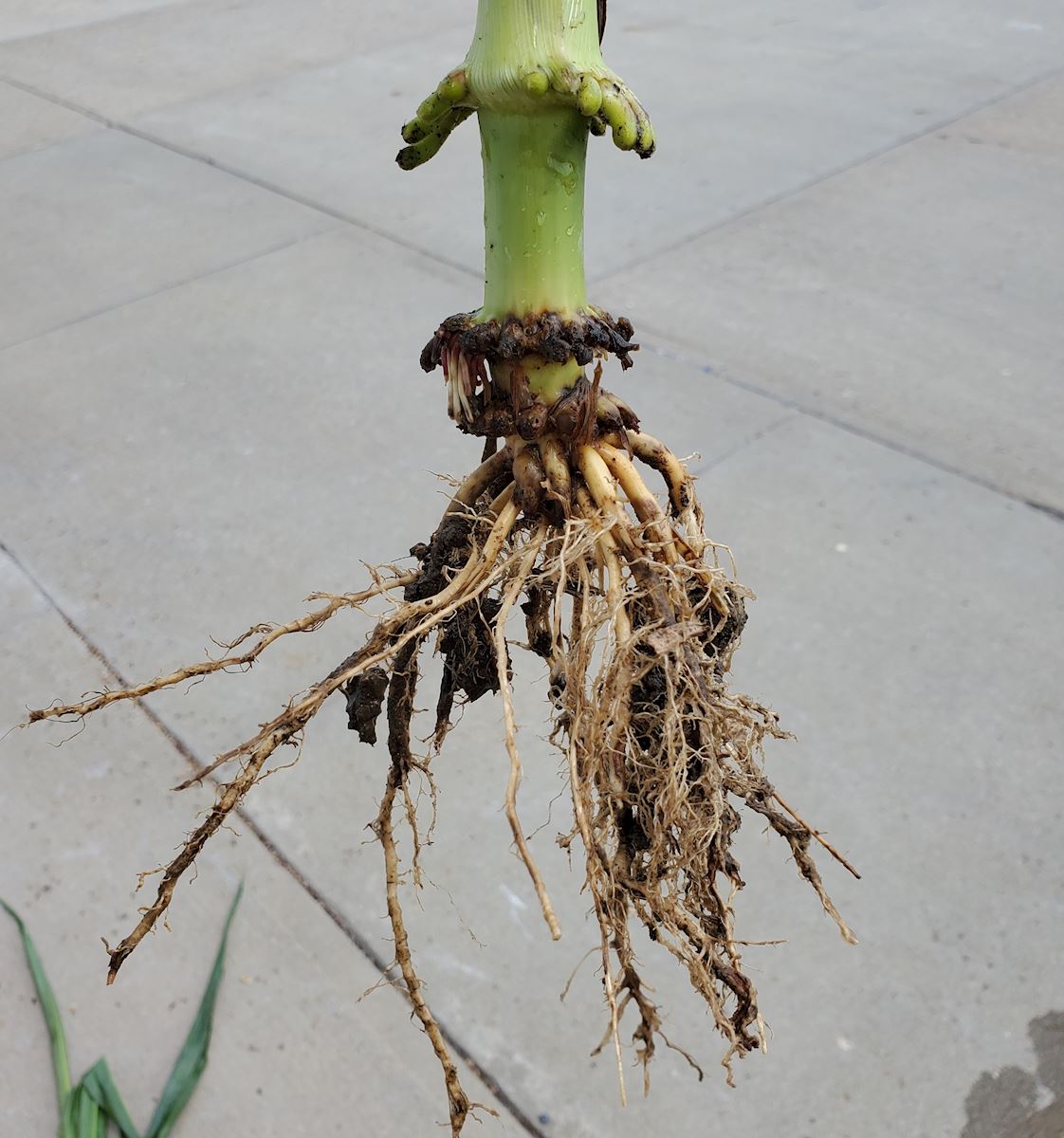
With high numbers of rootworm larva, high numbers of rootworm adult beetles are going to follow. Beetles have been emerging over the last 10 days. Adult beetles typically feed on corn silks due to their protein content. This silk clipping prevents pollination and kernel formation and negatively effects yield. The picture below shows an ear that suffered extreme beetle feeding this week.
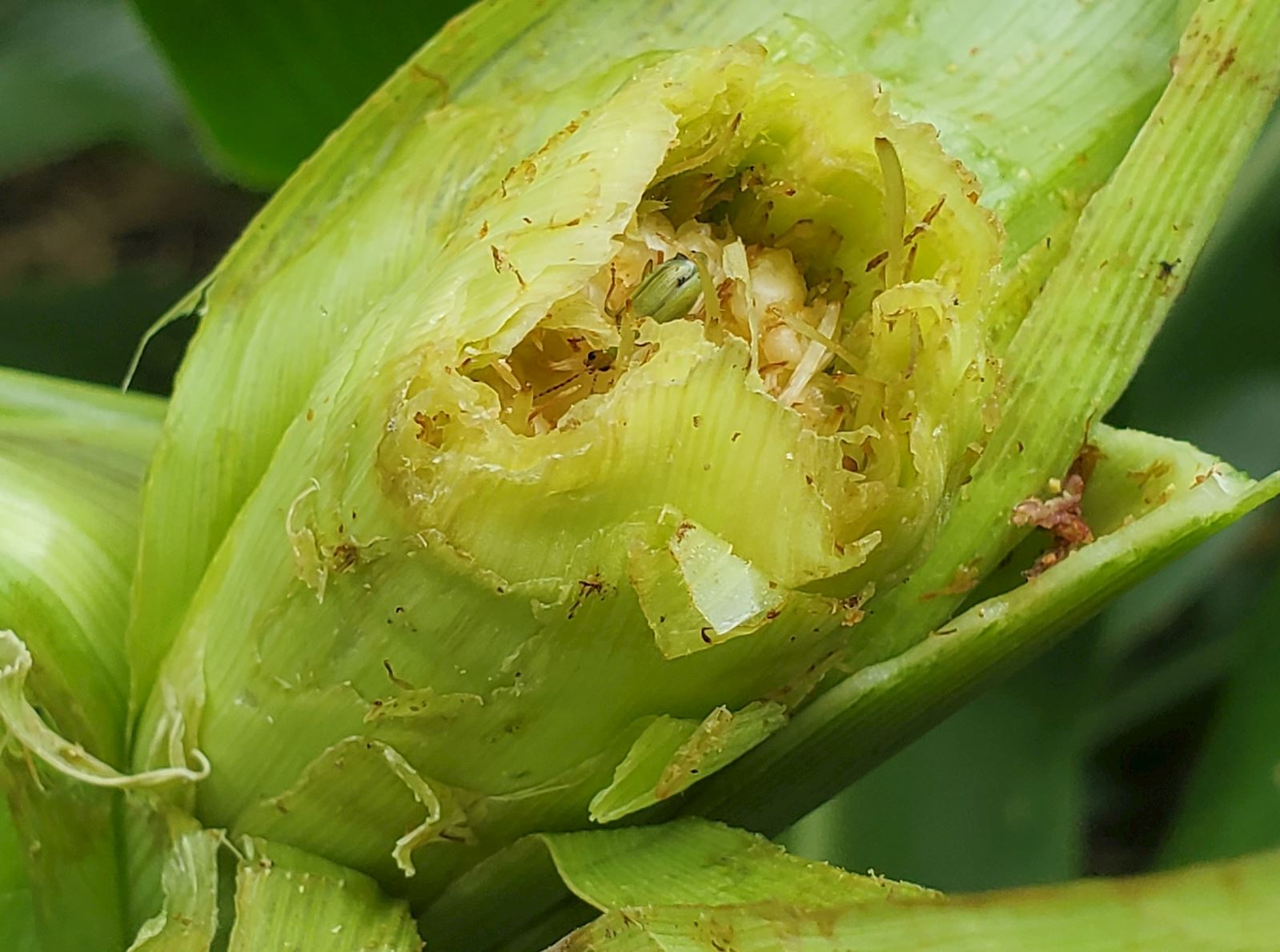
Corn rootworm silk clipping damage can be unpredictable. Adult beetles can fly and migrate to their food source. A rotated corn field may not have had any larva present this year but beetles can relocate to that field to feed on corn silks. Beetle counts are high enough this year that many acres would benefit from an insecticide application alongside the fungicide application. Proper scouting is recommended to determine the level of beetle activity within your specific corn fields.
Leaf Diseases
This week corn leaf diseases started to show signs of early development. Gray leaf spot is one of the most common corn diseases in our area. Gray leaf spot lesions started to develop over the last few days. This disease forms gray, blocky lesions in between the veins of a corn leaf. Lesions destroy leaf tissue and limit sugar and starch production as we move into grain fill. The picture below shows gray leaf spot in it's early development.

Physoderma brown spot appears to be back again this year. Physoderma exhibits itself as dark spots on the midrib of corn leaves and lighter spots on the blade of the leaf. Infected midribs lose strength and can be more susceptible to physical damage, limiting the leaf area of a plant. Physoderma can also infect the lower nodes of a corn plant and weaken the stalk. This can lead to late season standability concerns.
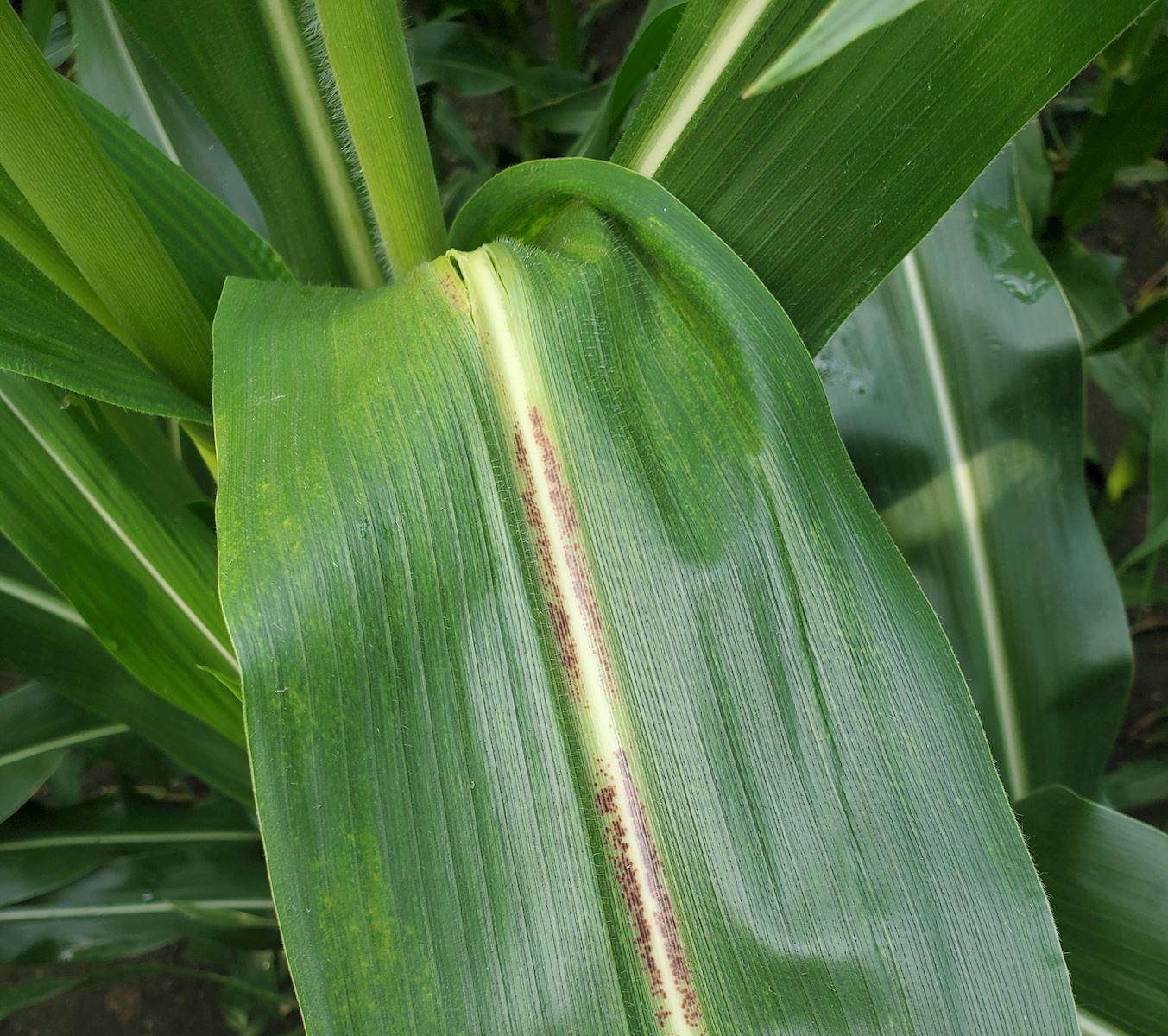
As we talked about last week, current environmental conditions are very favorable to disease formation. Both of these yield robbing diseases are caused by a fungus and can be controlled with a fungicide application. The fact we are seeing these diseases develop this week should be another consideration towards applying fungicide this year.
Looking Forward
The majority of corn fields will be tasseling over the next 7 days. Couple that with soybeans reaching R3 and fungicide applications will be going full bore next week. Scouting will be directed towards evaluating insect pests, disease pressure, and pollination progress. Next week's newsletter will cover these topics and other observations from the field.